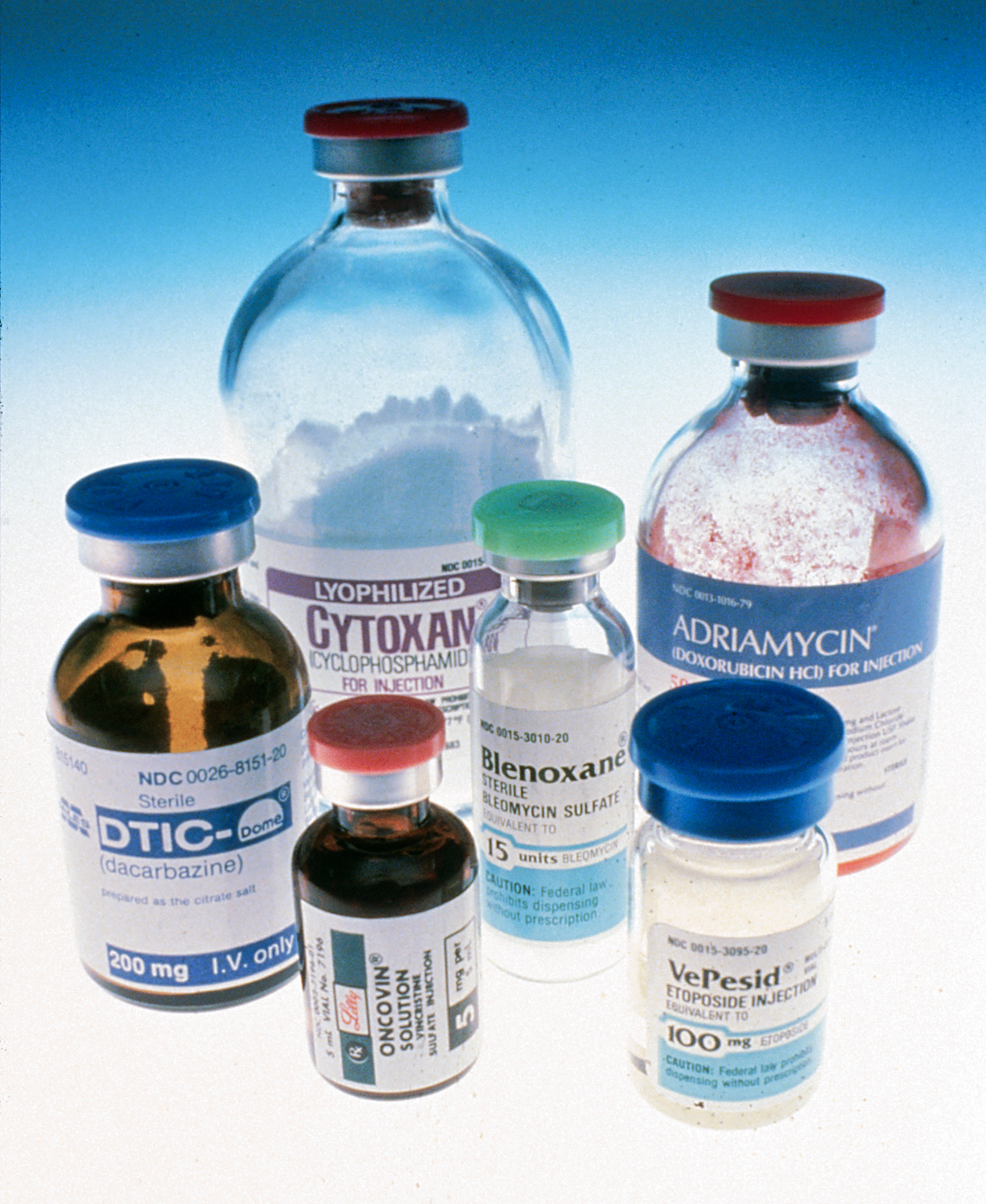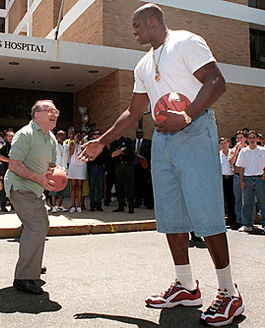By Ashley Mooney
A national shortage of the cancer drug methotrexate is causing concern for Duke doctors and their patients, and is part of a larger national trend of shortages in cancer drugs and antibiotics.
“It’s been a real nightmare—it’s a very real shortage,” said Dr. David Rizzieri of Duke Medicine’s Cellular Therapy Division. “It’s part of a bigger [drug shortage] problem, not just a methotrexate problem.”

Six bottles of different cancer drugs. Methotrexate is not pictured. Image courtesy of the National Institutes of Health.
Ben Venue Laboratories—the largest manufacturer of methotrexate—temporarily closed its manufacturing facility in Bedford, Ohio, because it could not guarantee product safety, according to an article from the New York Times. Shortfalls have also been caused by prescription drugs going generic and becoming less profitable, according to an article from WRAL.
Rizzieri said members of the Duke community and others have approached Congress and national advocacy groups, but not much can be done about the lack of medication. Shipments from other countries are currently providing American hospitals with the drugs.
Issues of quality control and cost make the duration of drug shortages unknowable, Rizzieri said.
“The shortages have been at variable length with the drugs over the last couple of years,” he said. “Sometimes we’ve had shipments arrive from China and be held up at the docks [while] the drugs were tested to see if they were at the right quality to be released in the United States.”
A shipment of methotrexate will soon arrive in the United States, with enough medication to last the entire nation about a month, according to the New York Times article. But the shortage is still not solved.
Rizzieri said patients are left with few options for care.
When his patients need medicine that is in low supply, Rizzieri said he often calls his colleagues first and if they have the proper drug, he sends his patient there to be treated. If nobody else has the right medication, a different regiment of chemotherapy may be used in its place. In some instances, he said, patients may need to travel out of the country to buy a different version of the drug.
”There are a number of good people working very hard to find drugs, but the issues of quality concern and cost remain,” he said. “With that the duration of these shortages are unknowable.”






